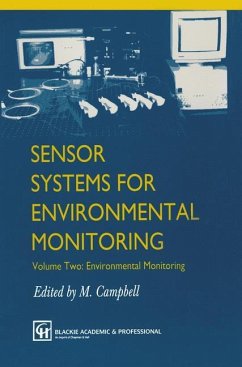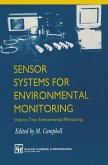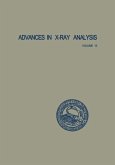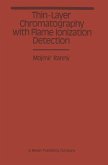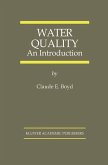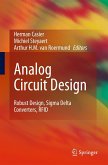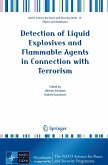Volume.- 1 Land pollution.- 1.1 Introduction.- 1.1.1 Origins and forms of land pollution.- 1.1.2 Legislation.- 1.2 Common contaminant types and environmental behavior.- 1.2.1 Contaminants and site use.- 1.2.2 Commonly occurring contaminant types.- 1.2.3 Factors affecting contaminant behavior.- 1.3 Sampling and analytical procedures.- 1.3.1 General strategies.- 1.3.2 Retrieval of samples.- 1.3.3 Retrieval of liquid-phase and gaseous-phase samples.- 1.3.4 Sample preservation.- 1.3.5 Laboratory analysis.- 1.4 Monitoring equipment and instrumentation.- 1.4.1 Discrete monitoring: indirect determination of subsurface conditions.- 1.4.2 Discrete monitoring: direct determination of subsurface conditions.- 1.4.3 Field testing kits.- 1.4.4 Continuous and automatic monitoring.- 1.5 Summary.- 1.5.1 Future requirements.- 1.5.2 Pro-active monitoring and auditing.- References.- 2 Water pollution.- 2.1 Introduction.- 2.1.1 Rationale for monitoring water pollution.- 2.1.2 Water quality variables and standards.- 2.2 Sampling.- 2.2.1 Spatial and temporal sampling intervals.- 2.2.2 Sample averaging.- 2.2.3 Flow-proportional sampling.- 2.2.4 Event sampling.- 2.2.5 Practical sampling techniques.- 2.3 Continuous monitoring.- 2.3.1 In situ sensors.- 2.3.2 Pumped systems.- 2.3.3 Datalogging.- 2.3.4 Telementry and warning systems.- 2.4 Physical variables.- 2.4.1 Temperature.- 2.4.2 Conductivity, salinity and total dissolved solids.- 2.4.3 Turbidity and suspended solids.- 2.4.4 Colour.- 2.5 Chemical variables.- 2.5.1 Dissolved oxygen.- 2.5.2 Acidity, alkalinity and pH.- 2.5.3 Anions.- 2.5.4 Cations.- 2.5.5 Petrochemicals, oils and grease.- 2.5.6 Pesticide and herbicide residues.- 2.6 Biological variables.- 2.6.1 Biochemical oxygen demand.- 2.6.2 Total organic carbon.- 2.6.3 Chemical oxygen demand.- 2.6.4 Bacterial concentration.- 2.6.5 Phytoplankton concentration.- 2.7 Conclusions -.- 2.7.1 Summary.- 2.7.2 Future trends.- Acknowledgements.- References.- 3 Air pollution.- 3.1 Introduction.- 3.1.1 Air quality standards.- 3.1.2 Air pollution on the global scale.- 3.2 Characterisation of atmospheric pollutants.- 3.2.1 Gases.- 3.2.3 Particles.- 3.2.3 Dissolved pollutants.- 3.3 Air pollution sampling.- 3.3.1 Sampling philosophy.- 3.3.2 Sampling in practice.- 3.4 Monitoring modes.- 3.4.1 Continuous methods.- 3.4.2 Integrated methods.- 3.5 Conclusions.- 3.5.1 Future requirements.- References.- 4 Periodic methods for monitoring air pollution.- 4.1 Introduction.- 4.2 Sampling: the problems to overcome.- 4.3 Losses to the sample line.- 4.3.1 Condensation.- 4.3.2 Impaction.- 4.3.3 Adsorption.- 4.3.4 Reactivity.- 4.4 Classification of pollutants.- 4.5 Classification of air samplers.- 4.5.1 Extractive air samplers.- 4.5.2 Non-extractive devices.- 4.6 Detection limit.- 4.7 Gas velocity and total flow in a duct.- 4.7.1 Terms used in flow measurements.- 4.7.2 Flow measurements for total flow.- 4.7.3 Flow measurements in swirling flow conditions.- 4.7.4 Flow measurements associated with particulate sampling.- 4.7.5 A procedure for small- and medium-scale industry.- 4.7.6 Non-standard flow patterns.- 4.8 Measurement of particulate in ducts.- 4.8.1 Particle sizes.- 4.8.2 Particle segregation.- 4.8.3 Sample positions in the duct.- 4.8.4 Isokinetic sampling.- 4.8.5 Non-standard conditions.- 4.8.6 Monitoring methods.- 4.8.7 Analysis.- 4.9 Sampling devices for non-reactive gases and vapours.- 4.9.1 Grabs or non-extractable samplers.- 4.9.2 Adsorption tubes with solvent recovery.- 4.9.3 Adsorption tubes with thermal recovery.- 4.10 Wet impingers and sintered glass absorbers.- 4.11 Cryogenic methods.- 4.11.1 Total cryogenic sampling.- 4.11.2 Cryogenic tubes.- 4.11.3 Condensate samplers.- 4.12 Odour measurement.- 4.13 Instrumental methods for use in the field.- 4.13.1 Advantages and disadvantages of field instruments.- 4.13.2 Dataloggers.- 4.13.3 Calibration.- 4.13.4 Calibrating monitors for volatile organic compounds.- 4.14 Standard atmospheres.- 4.14.1 Aerosols.- 4.14.2 Gases and vapours.- 4.15 Selected methods.- 4.16 Conclusion.- Acknowledgements.- Appendix 1: References to the Environmental Protection Agency of the USA.- Appendix 2: References to the NIOSH methods.- Appendix 3: References to the Health and Safety Executive methods for the determination of hazardous substances (HSE MDHS).- Appendix 4: References to the ASTM standard methods.- References.- 5 Industrial methods of spectrophotometry measurements in process control.- 5.1 Introduction to process analytical chemistry.- 5.1.1 Off-line era.- 5.1.2 At-lineera.- 5.1.3 On-line era.- 5.1.4 In-line era.- 5.1.5 Non-invasive era.- 5.1.6 Summary.- 5.2 Project route.- 5.2.1 Project definition.- 5.2.2 Applications engineering.- 5.2.3 Technology transfer.- 5.2.4 Documentation.- 5.3 Industrial uses of spectroscopy.- 5.4 Industrial measurements in the UV-visible region.- 5.4.1 Photometer analyser design.- 5.4.2 Spectrophotometer analysers.- 5.4.3 Flow injection analysers.- 5.4.4 Process applications of FIA.- 5.4.5 Summary.- 5.5 Industrial measurements in the IR region.- 5.5.1 Mid-IR spectroscopic analysis.- 5.5.2 Near-IR spectroscopic analysis.- 5.6 Quantitative measurement in spectroscopy.- 5.6.1 Beer¿s law.- 5.6.2 Derivative techniques.- 5.6.3 Absorbance ratio analysis.- 5.6.4 Multicomponent analysis.- 5.6.5 Curve fitting.- 5.6.6 Chemometrics.- 5.7 Future trends.- References.- 6 Noise and vibration.- 6.1 Introduction.- 6.2 Noise sources.- 6.2.1 Introduction.- 6.2.2 Traffic.- 6.2.3 Railways.- 6.2.4 Aircraft.- 6.2.5 Industrial and commercial developments.- 6.2.6 Wind turbines.- 6.2.7 Building services.- 6.2.8 Mechanisms for sound transmission within buildings.- 6.3 Legislation.- 6.3.1 Planning guidelines.- 6.3.2 Environmental assessment.- 6.3.3 Environmental Protection Act 1990.- 6.3.4 Noise and Statutory Nuisance Act 1993.- 6.3.5 Control of Pollution Act 1974.- 6.3.6 Industrial and commercial developments.- 6.3.7 Neighbour noise.- 6.3.8 Codes of practice.- 6.3.9 Road Vehicles (Construction and Use) Regulations 1986.- 6.3.10 EC directives.- 6.3.11 Aircraft regulations.- 6.3.12 Railways.- 6.3.13 Noise at work regulations.- 6.3.14 Management of Health and Safety at Work Regulations (1992).- 6.3.15 Building regulations.- 6.3.16 Vibration.- 6.4 Measurement.- 6.4.1 Sound pressure meter.- 6.4.2 Calibration.- 6.4.3 Monitoring points.- 6.4.4 Meteorological conditions.- 6.4.5 Sound power measurements.- 6.4.6 Sound intensity measurements.- 6.4.7 Vibration measurements.- 6.5 Noise reduction and control.- 6.5.1 Traffic.- 6.5.2 Railways.- 6.5.3 Aircraft.- 6.5.4 Wind turbines.- 6.5:5 Sound within buildings.- 6.5.6 Vibration control.- 6.6 Future trends.- 6.7 Glossary.- References.- 7 Ionising radiation.- 7.1 Introduction to radiation.- 7.1.1 Use of radioactive substances.- 7.1.2 Legislation.- 7.2 Properties of ionising radiation.- 7.2.1 Radioactive decay.- 7.2.2 Types of radiation.- 7.2.3 Units of radiation.- 7.2.4 Health effects.- 7.2.5 Hazards.- 7.2.6 Protection standards.- 7.3 Sources of ionising radiation.- 7.3.1 Natural sources.- 7.3.2 Artificial sources.- 7.3.3 Summary of radiation sources.- 7.4 In situ measurements.- 7.4.1 Health physics instruments.- 7.4.2 External dose rate.- 7.4.3 Surface contamination.- 7.4.4 Field ?-ray spectrometry.- 7.5 Sampling.- 7.5.1 General considerations.- 7.5.2 Soils.- 7.5.3 Vegetation.- 7.5.4 Atmospheric sampling.- 7.5.5 Sediments.- 7.5.6 Waters.- 7.6 Analytical procedures.- 7.6.1 Physical preparation.- 7.6.2 Chemical separation.- 7.6.3 Instrumentation.- 7.6.4 Quality assurance and validation.- 7.7 Case study.- 7.8 Conclusions.- 7.8.1 Summary.- 7.8.2 Future trends.- References.
Bitte wählen Sie Ihr Anliegen aus.
Rechnungen
Retourenschein anfordern
Bestellstatus
Storno

